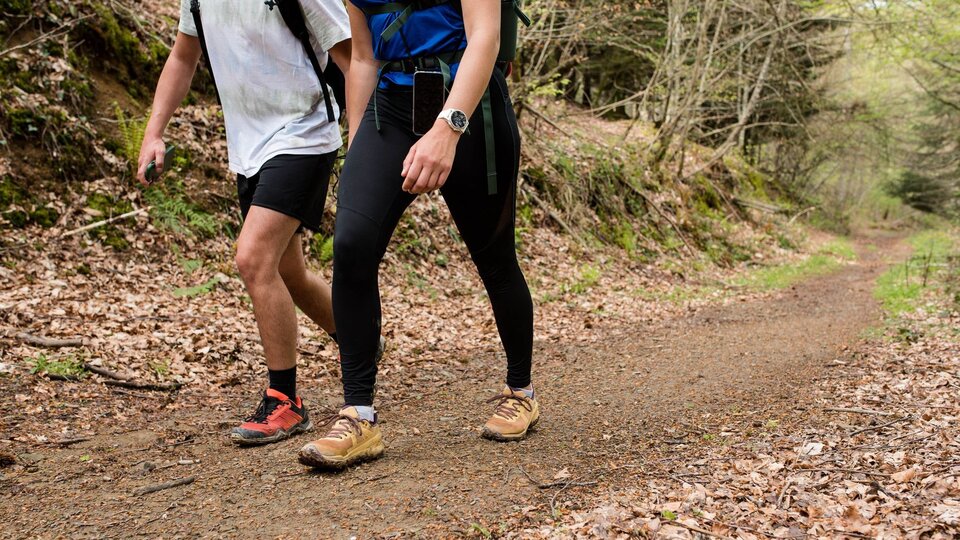Twisted ankles and getting winded may be fears holding you back from getting back to hiking this summer. If it’s been a while since you’ve hiked and you want to crush your favorite big bike, try these three training approaches.
Heels-Up and Single-Leg Exercises for Ankle Stability
Nobody wants a twisted ankle at the beginning of summer from a hike. It may have been a while since your ankles have experienced the demands that hiking can place on them. That’s why including heels up and single leg exercises into your routine can prepare your ankles for that steep, rocky stretch of your favorite hike.
“Heels-up” means elevating your heels off the ground instead of keeping your feet flat. This technique requires more stability in the foot and ankle (actually the entire leg) and exposes your ankles to similar demands as hiking. This extra instability requires decreasing the exercise weight.
Single-leg exercises offer the same benefits as heel-up exercises because they can be more unstable due to less foot contact with the ground. You can even combine a single-leg exercise with the heels up or train with your foot on a wedge. You’ll feel that more than your ankle is challenged!
Here are some closed kinetic chain exercises that you can modify the foot position into heels-up:
Remember, the foot position is a modifiable variable in training that can be adjusted to meet the training goal or situation.
Here are some single-leg exercises you can try to challenge your ankles and also combine with heel-up training:
These exercises can be programmed as just bodyweight in your warm-up or cool-down, or you can swap out one or two of your main exercises with a loaded version from the lists above.
Incline Cardiovascular Training
Hiking usually has an incline component, so spending cardio time climbing up a grade can be a great way to prepare yourself for an uphill hike. Try inclining the treadmill next time you’re on it. For example, you can start flat, increase the grade by two percent every five to ten minutes, and cool down with a slightly inclined grade.
Another great cardio machine that has an incline is the stair climber. Don’t go too crazy at that speed because you’re probably training to be able to do a nice, long hike in the summer, not a race.
Dynamic Movements Other than in a Straight Line
One reason hiking can be so fun is the constant variation of locomotion due to the environment. Here are some examples:
-
Taking a steep turn downhill
-
Step up and diagonal over a large rock
-
Shuffling sideways down an incredibly steep grade to decelerate
-
Variable step sizes from different rocks
-
Taking short cuts
Training in a straight line doesn’t exactly replicate the demands of hiking. It’s worth it to include some footwork, dynamic warm-up movements, and running drills into your warm-up or cool-down to prepare your body for the variability of hiking. Here are some ideas to get you started:
-
Side shuffles
-
Grapevine steps
-
Side bounding alternating sides
-
Diagonal single-leg bounding or hopping
Start with a Smaller Hike
We don’t want to come across as the gatekeepers of summer hiking by making it seem like these are prerequisites. However, sometimes, the best thing is to start small and slowly progress. We all know this to be accurate, but sometimes, we must hear it and permit ourselves. Otherwise, we are chasing our best and may not be there yet.
If you’re just returning to it, there is no pressure to start with that big hike!
